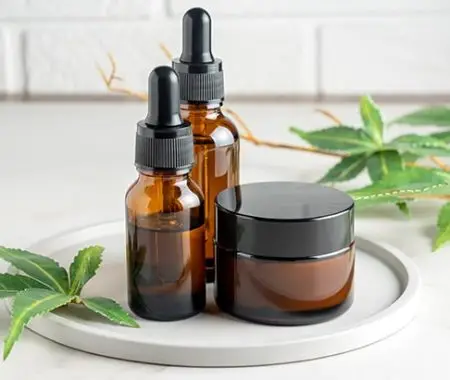In the realm of food labeling, nutrient content claims play a pivotal role in guiding consumers through their purchasing decisions. These claims, often seen on the packaging of various food products, provide insights into the nutritional value of the item inside. For instance, terms like “high in calcium” or “low sodium” aren’t just marketing gimmicks; they’re regulated statements that have specific meanings.
The Food and Drug Administration (FDA), initially under the Nutrition Labeling and Education Act (NLEA) of 1990 and more recently updated with the Food Labeling Modernization Act of 2018, has set stringent criteria for these claims to ensure accuracy and transparency. This article will unpack the intricacies behind these nutrient claims, helping you decode the true meaning behind these labels and make healthier, informed choices.
What is a Nutrient Claim?
A nutrient claim, in the context of food labeling, refers to the specific declaration regarding the quantity of a particular nutrient present in a food product. These claims serve as informative guides, assisting consumers in adjusting their nutrient intake based on their dietary needs. An example of a nutrient claim would be: “Low sodium” or “High in fiber”.
Just like health claims, these statements are mandated to be both truthful and precise, ensuring that consumers receive accurate information about the products they choose. An example of a health claim would be something like: “Diets low in sodium may reduce the risk of high blood pressure, a disease associated with many factors”.
Where is the Nutrient Claim Found?
The nutrient claim is prominently displayed on the packaging of food products, specifically designed to catch the consumer’s eye. Typically, you’ll find these claims on the front of the package, often referred to as the Principal Display Panel (PDP). This strategic placement ensures that consumers can quickly and easily identify key nutritional attributes of a product while shopping.
Whether it’s a bold “Low Sodium” label on a can of soup or a “Rich in Omega-3” tag on a packet of seeds, these claims are positioned to provide immediate insights into the product’s nutritional profile, further aiding consumers in making informed dietary choices.
See How FoodLabelMaker Can Help You
Types of Nutrient Content Claims:
Nutrient content claims can be categorized based on the specific nutrient they reference and the nature of the claim itself. These claims can be broadly divided into:
- Absolute Claims: These claims provide information about a nutrient without comparing it to another product. Examples include “Sugar-Free” or “High in Vitamin C.”
- Relative Claims: These claims compare the nutrient levels of one product to another, such as “Reduced Fat” or “Less Sodium than our regular product.”
- Nutrient Level Statements: These straightforwardly state the level of a particular nutrient in a product, like “Contains 10 grams of Protein.”
- General Nutrient Claims: These are more generic and don’t reference a specific level or percentage, such as “Healthy” or “Nutritious.”
Nutrient Content Claims and What They Mean:
To ensure clarity and prevent misleading information, the FDA has set specific criteria for each type of nutrient content claim.
Click here for a more in-depth guide on nutrient content claims according to the FDA Food Labeling Guide.
Understanding these claims and their specific criteria can help consumers make informed decisions about their dietary choices. It’s essential for manufacturers to adhere to these guidelines to ensure transparency and build trust with their consumers.
Formatting:
When it comes to nutrient content claims on FDA-regulated food labels, not only is the content of the claim important, but so is its presentation. Proper formatting ensures that consumers can easily understand and interpret the information provided. Here’s what you need to know about formatting nutrient content claims:
- Prominence: The claim should be easily noticeable. This can be achieved by using bold fonts or placing the claim in a location on the label where it’s likely to be seen first.
- Font Size: The size of the font used for the claim should be proportional to the size of the label. It should be large enough to be read easily but not so large that it dominates other essential information on the label.
- Contrast: The claim should stand out from the background. This can be achieved by using contrasting colors or a different font style.
- Language: The claim should be clear and straightforward. Avoid using technical jargon or terms that the average consumer might not understand.
- Supporting Information: If space allows, consider adding a brief explanation or qualifier next to the claim. For example, next to a “Low Sodium” claim, you might add “Sodium is an essential nutrient but can be harmful in excess.”
The recent changes to the Nutrition Facts label in 2016 and 2020 have made it even more user-friendly. For instance, the number of calories and the serving size declaration have been bolded to highlight this crucial information. The type size for “Calories,” “servings per container,” and the “Serving size” declaration has also been increased.
Exceptions:
While the FDA has set clear guidelines for nutrient content claims, there are exceptions to these rules. It’s crucial for manufacturers to be aware of these exceptions to ensure compliance:
- Small Packages: For products with very limited labeling space, such as small candy wrappers, certain allowances might be made regarding the size and placement of nutrient content claims.
- Bulk Products: Products sold in bulk, where consumers can determine the quantity they want, might not require detailed nutrient content claims on the packaging. Instead, this information might be provided on a display card next to the bulk product.
- Fresh Produce and Seafood: These products are often exempt from bearing nutrient content claims since their nutrient content can vary depending on various factors like seasonality and source.
- Products with Negligible Nutrient Content: If a product naturally has a negligible amount of a particular nutrient, it might not need to make a specific “free” claim. For example, apple slices wouldn’t need a “cholesterol-free” claim because apples naturally don’t contain cholesterol.
- Claims Based on New Scientific Evidence: In some cases, manufacturers might want to make a nutrient content claim based on new scientific evidence that hasn’t been recognized by the FDA yet. In such cases, they might be allowed to make the claim, but they’ll need to add a disclaimer stating that the evidence isn’t conclusive.
It’s essential for manufacturers to stay updated with FDA guidelines and be aware of these exceptions. This assures that they provide accurate information to consumers while also staying compliant with regulations. Download your very own checklist here to ensure that you are following correct and compliant processes when making nutrient content claims.



